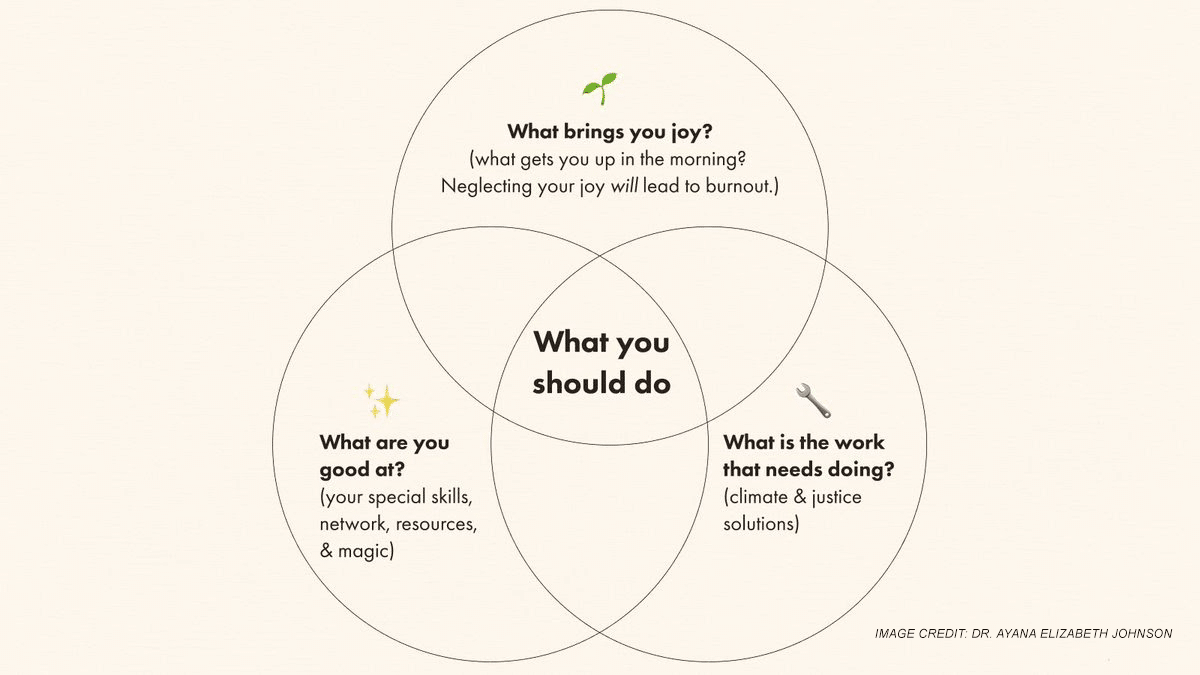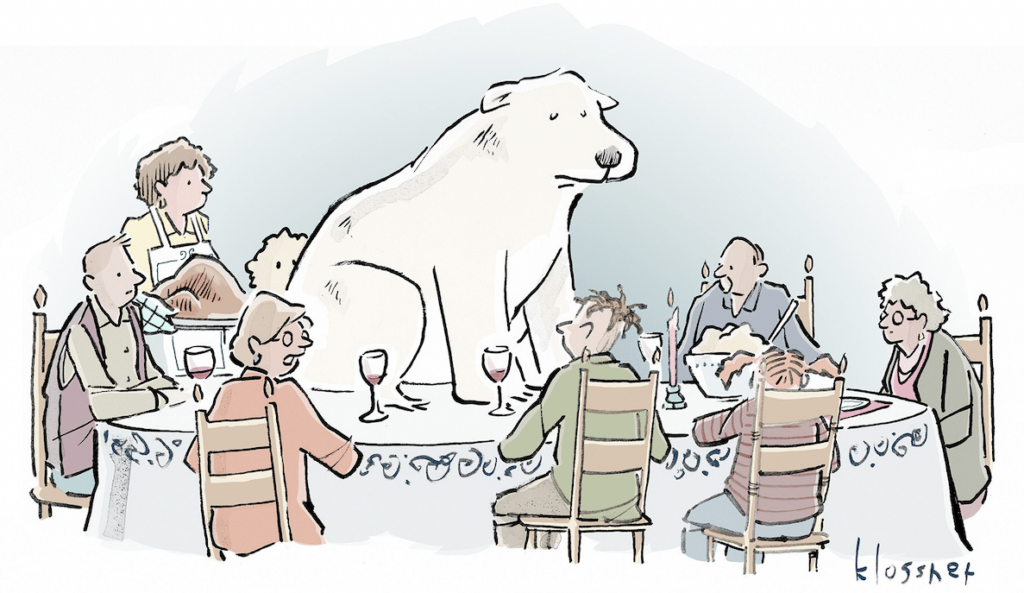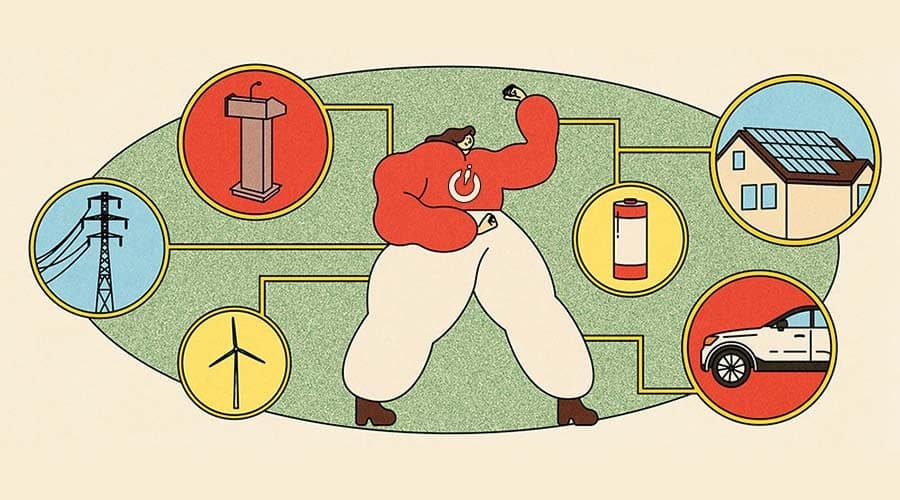This article is from the May 19, 2021, issue of Flip the Script, a weekly newsletter moving you from climate stress to clean energy action. Sign up here to get it in your inbox (and share the link with a friend).
This basic but important question deserves its own blog post. This one’s for those of you thinking, “Okay, I see you, energy transition. We’ve got mountains to climb, but I see the path forward—and I’m here for it. Sooooooooooo…what should I do exactly?”
Let’s lay out two foundational facts first:
- There is no shortage of quantity or variety of work to be done to tackle the climate crisis and transition to a clean energy future. We’ve got technologies to adopt, solutions to deploy (top 80 here), systems to change, hearts and minds to win, and politicians to convince. No corner of our industry, government, or economy can sit this one out.
- There are a lot of us. Human civilization, with its boundless energy, creativity, skills, passion, and collective resolve, is a force to be reckoned with. Oh, and we each have access to the sum of all human knowledge (updated by the second) via a machine in our pockets.
With such a variety of challenges to tackle and an equally varied set of skills and capabilities to deploy, we’d be wise to figure out a good method for assigning the right humans to the right task.
A powerful venn diagram
Here’s a good starting point: a venn diagram from the fantastic Dr. Ayana Elizabeth Johnson. While profoundly simple, it’s one of the most effective answers we’ve seen to the common question: what should I do?
-
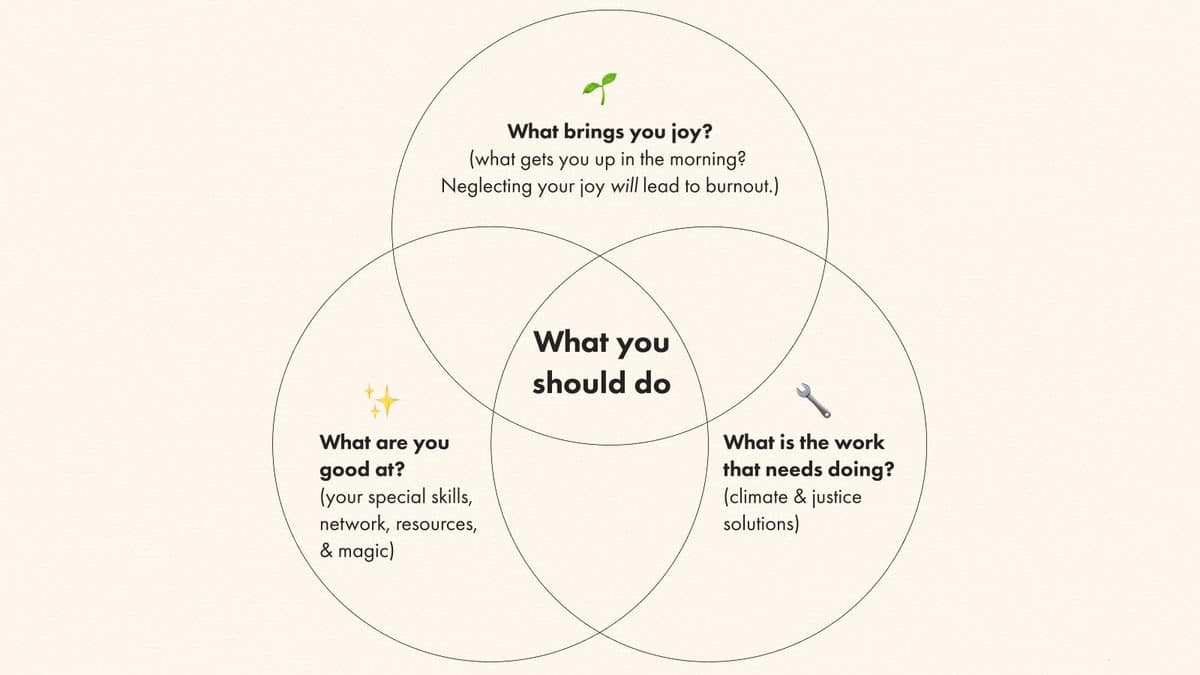
Dr. Ayana Elizabeth Johnson’s venn diagram. Three circles: we’ll call them the “joy” circle, “solutions” circle, and “your magic” circle for short.
The “Joy” circle
This might be the most neglected but most critical circle. You need this element to sustain action—without it you’ll burn out. “This is the work of our lifetime,” Dr. Johnson explains. We’ve got to stay in it for the long haul. Added benefit: if you’re joyful about the work, you’re far more likely to draw people in to join you.
The “Solutions” circle
Again, there is no shortage of work that needs to be done (see above). It’s worth keeping in mind, though, that not all the work is equally impactful. Foregoing a plastic straw at McDonald’s won’t make a big dent and, frankly, the entire anti-plastic-straw movement won’t either. On the technology front, for example, we should probably prioritize tackling refrigerant management (no, not refrigerators themselves—the chemicals that make them cold) before micro wind turbines. We can’t (and shouldn’t) aim to optimize this prioritization effort with perfect, robotic precision; but we should be generally smart about it. There are some good reasons why we at Generation180 focus on activating people around solar and electric vehicle technologies, for example: they’re both high on the impact ranking list, economically viable for millions of households and businesses, ready to scale, and are good at creating ripple effects that amplify their impact.
The “Your magic” circle
This last circle doesn’t require as much explanation. Just make sure you’re considering all the various forms of value you can bring to the table, beyond the usual suspects like “I have loads of money” or “my cousin is a Tik Tok celebrity.” Think through all the things you can create, arrange, convene, give, publish, host, develop, or….cook? We need hilarious YouTubers and brilliant engineers, childrens’ book illustrators and courageous politicians. The bottom line is we need ALL the skills, resources, networks, and “magic” brought to the table.
Putting it all together
So what’s in the middle—the intersection of the “joy,” “solutions,” and “your magic” circles—in your venn diagram? Giving talks to help spread the word about climate and clean energy? Writing poems or producing art to spur reflection? Giving community members rides in your EV? Helping get-out-the-vote campaigns to let policymakers know you care about clean energy? Getting engaged with your local city council on renewable energy issues? Here are some examples that we’ve encountered in our time working alongside all sorts of individuals:
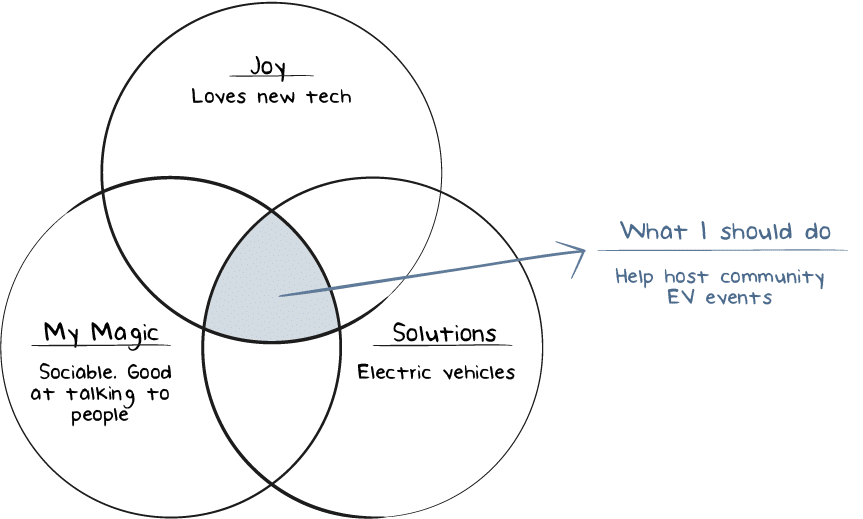
The EV owner-turned-community ambassador: she loves new tech (“Joy”), is great at talking to strangers (“Magic”), and wants to help drive adoption of EVs, a critical piece of the clean energy puzzle (“Solutions”). An incredible number of EV owners level up their impact by participating in community events that help educate others about the benefits of EVs (this is why over 300 in-person events normally happen during National Drive Electric Week). Since word of mouth is such a crucial source of information for car shoppers, this is important work that needs doing (we can help equip you for this).
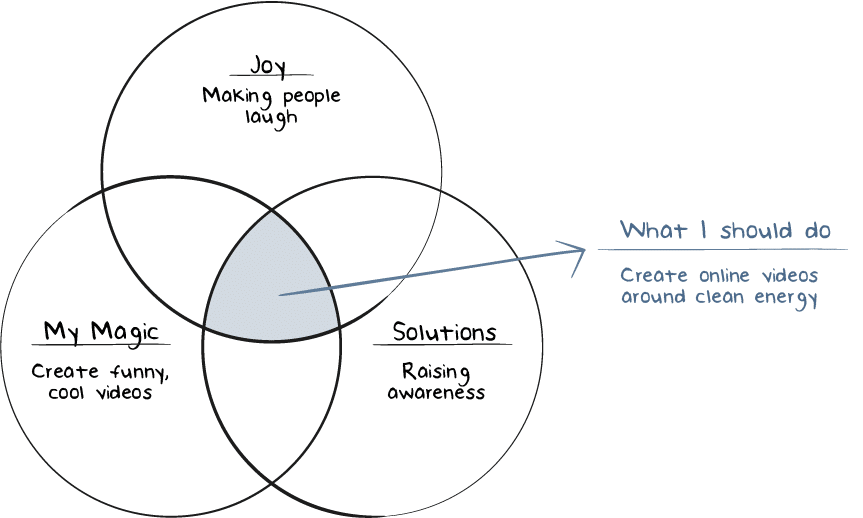
The creator making content for a good cause: He’s hilarious, writes great scripts, and knows that public education is a crucial step. It’s probably safe to say that online media consumption increased for most everyone during the pandemic. More than ever, content creators can use their skills and platforms to raise awareness and drive action.
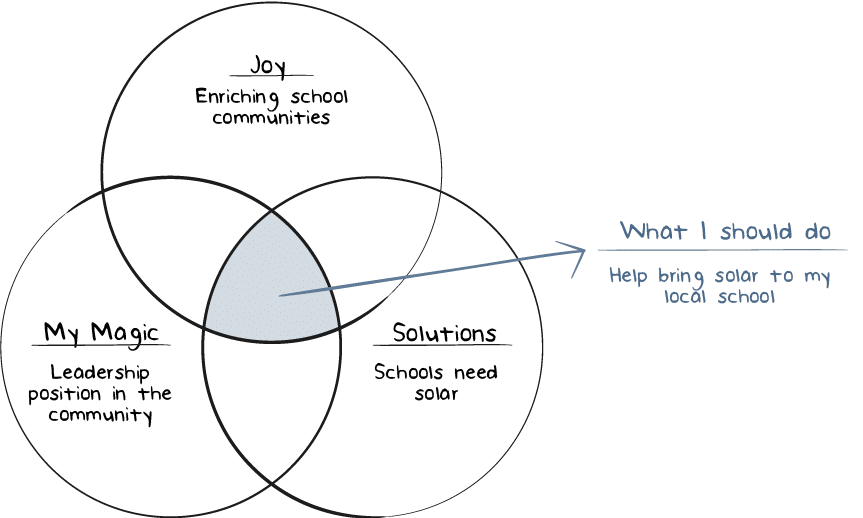
The school employee making solar happen: Her passion is helping school communities flourish, she has a position of leadership, and she wants to work toward an education system completely powered by clean energy. Given the array (no pun intended) of benefits that solar now offers to schools, teachers, administrators, school board members, parents, and other stakeholders can champion a win-win-win solution for their community.
See if you can set aside a few minutes this week to fill out your own venn diagram (we’d love to see it via email or social if you want to share!). If your diagram relates to making solar (on schools or homes) and electric vehicles (cars or school buses) happen, head to our pathways page to get started! Have a totally different but excellent idea? Email us at hello@generation180.org.












